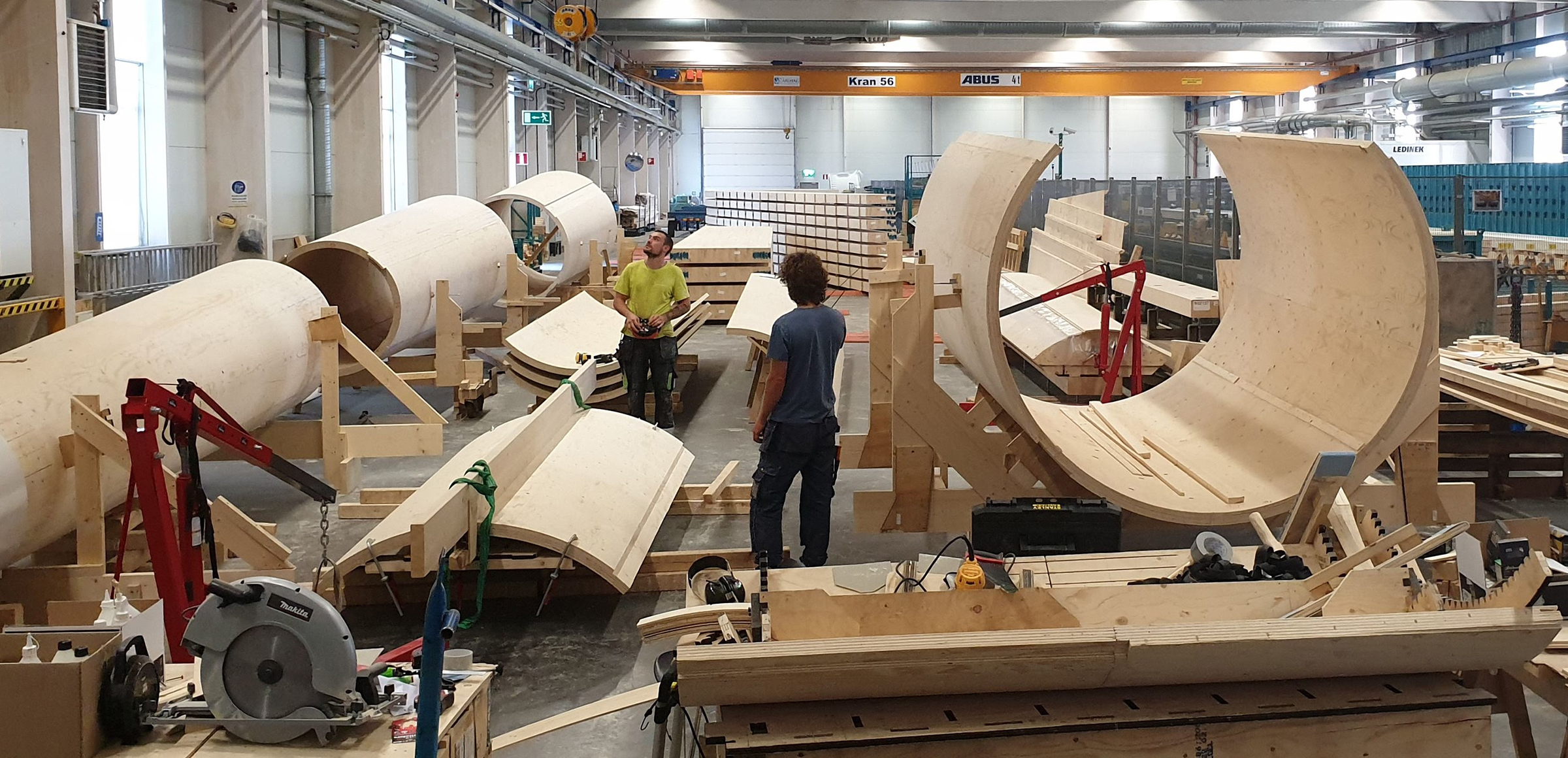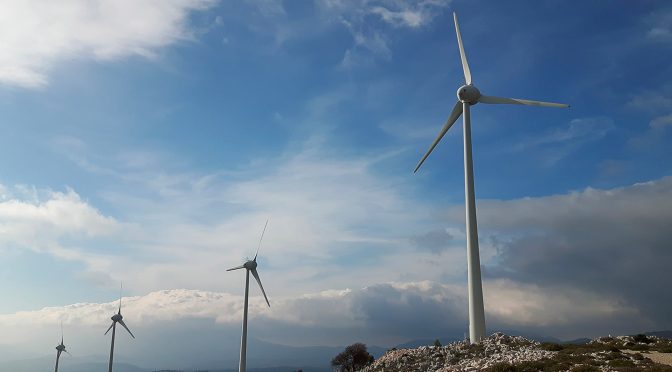Reuse, recycle and start innovative partnerships: Enel Green Power is studying how to give “new life” to decommissioned wind turbine blades and testing traditional materials, like wood, to build even more sustainable turbine towers.
We must always think about what comes next. Because preparing a sustainable energy future means increasing production from renewable sources, but also preempting the problems that will arise when plants reach the end of their life cycles.
Wind turbines, for example, have an average lifespan of 20 to 25 years. The first wind energy generators were installed at the beginning of the century; therefore, managing their decommissioning will become an issue very soon. While in some cases it is possible to extend their useful life by making the plants more efficient and by replacing some components, in others it will be necessary to completely replace the old wind generators with new, cutting-edge versions.
The majority of the components of a wind turbine are easy to recycle because they are made of metallic parts: the recycle percentage, in fact, is estimated at around 85%. The blades are the components that are hardest to recover, because they are made of composite materials: mainly resin reinforced with fiber glass, or carbon fiber in more recent plants, as well as secondary materials like glues, paints and metals. What can be done with them? Are there alternatives to the landfill, more in line with principles of sustainability and circularity?
This is a key issue because between now and 2030 wind power will represent one of the sectors that generates the largest volume of composite material waste. According to estimates by the University of Cambridge, by 2050 the world will need to deal with a good 43 million tons of material from the wind power industry.
Wind New Life: EGP’s research for innovation
For some years, Enel Green Power has been researching new sustainable solutions based on reuse and recycling, to give new life to wind turbine blades. In order to gather ideas, we launched two challenges on our Open Innovability crowdsourcing platform as well as various proof of concept studies for some innovative recycling technologies. This was done to assess projects’ feasibility and to test the potential reuse of end-of-life composite materials, by transforming them into secondary raw materials for new production processes.
We constantly interact with startups, research centers and other companies, in harmony with our Group’s Open Innovability approach. The final goal is to differentiate and recover materials in order to create finished products for sectors such as construction, marine engineering or furniture making: panels for soundproofing and heat insulation, flooring, designer objects, laminates for use in various contexts, construction elements and asphalt additives.
Giving new life to wind turbine blades represents a fascinating innovation and sustainability challenge, but there are still many issues to solve. First of all, there are still no consolidated industrial practices concerning the composition and quantity of secondary raw materials that can be reintroduced in new products. Furthermore, a real production chain for the sector is yet to be established, and there are still wide gaps concerning regulatory aspects and standards.
The ultimate objective is therefore to give life to an industrial sector that is able to discipline the end of life of composite materials from wind turbine blades, in order to create a sustainable value chain. This new business model will have to be not only circular, but also economically beneficial compared to traditional disposal solutions.
“Our goal is to promote the development of a new end-to-end process: from decommissioning blades to reusing the secondary raw materials within new production processes.”
Fabio Fugazzotto, Head of Wind Innovation at EGP
To this end, EGP is dialoguing with startups and research centers, as well as producers of wind turbine blades and potential final clients – i.e. the companies interested in purchasing secondary raw materials – acting as a facilitator for the creation of a solid production chain.

New solutions for wind towers: the collaboration with Modvion
While exploring ways to recycle turbine blades, other innovative solutions are being studied, always with the goal of increasing the end-to-end sustainability of wind generation. As Fugazzotto explains, “EGP is speaking with producers of wind turbines all over the world to identify new materials that are easier to recycle when they reach their end of life.”
Within the context of innovative materials for wind power, we recently signed a partnership agreement with Swedish startup Modvion to validate a new concept: building wind towers out of wood, rather than steel as is traditionally done. The expected benefits regard sustainability, as well as logistics and installation costs. Thanks to a modular system, the towers are assembled on-site and can be transported more easily. Modvion has created a 30-meter prototype tower, but aims to launch on the market towers in excess of 100 meters by the end of 2022.
“Bigger and taller towers are possible thanks to Modvion’s modular design and engineered wood, nature’s own carbon fiber,” explains Otto Lundman, Modvion’s co-founder and CEO. “Higher wind turbines can reach stronger winds and are more stable, and larger rotor blades can capture more energy. This makes bigger wind turbines more efficient in terms of resources, and reduces the land take necessary to produce a given quantity of electricity.”
As with similar collaborations, Enel Green Power is offering Modvion support and guidance in the development phase as well as use cases for the first product trials in the real environment, when the technology is ready. The goal is to speed up progress towards the industrialization and marketing stages, to foster growth and help the startup enter the market.
“We pursue sustainability and operational excellence through the innovation of technologies and business models. We are collaborating with Modvion on wooden wind tower technology to reduce CO2 emissions over the entire life cycle, also enabling a simplification of the transport and installation phases, in line with our targets for sustainable growth.”
Nicola Rossi, Head of Innovation at EGP
“Given EGP’s vast experience in developing wind power projects all over the world, this partnership enables us to speed up the development and introduction of wooden towers in the market, both through knowledge transfer and with the first installations at utility scale.”
Otto Lundman, co-founder and CEO of Modvion
EGP’s approach considers the widest range of sustainable and circular solutions, also in the long term and across the length of the value chain, from the production of towers to logistics and even to decommissioned turbines’ second life. Such a far-sighted view can nurture a new future for wind power that is more sustainable than ever, and capable of powering new opportunities for development and business.


